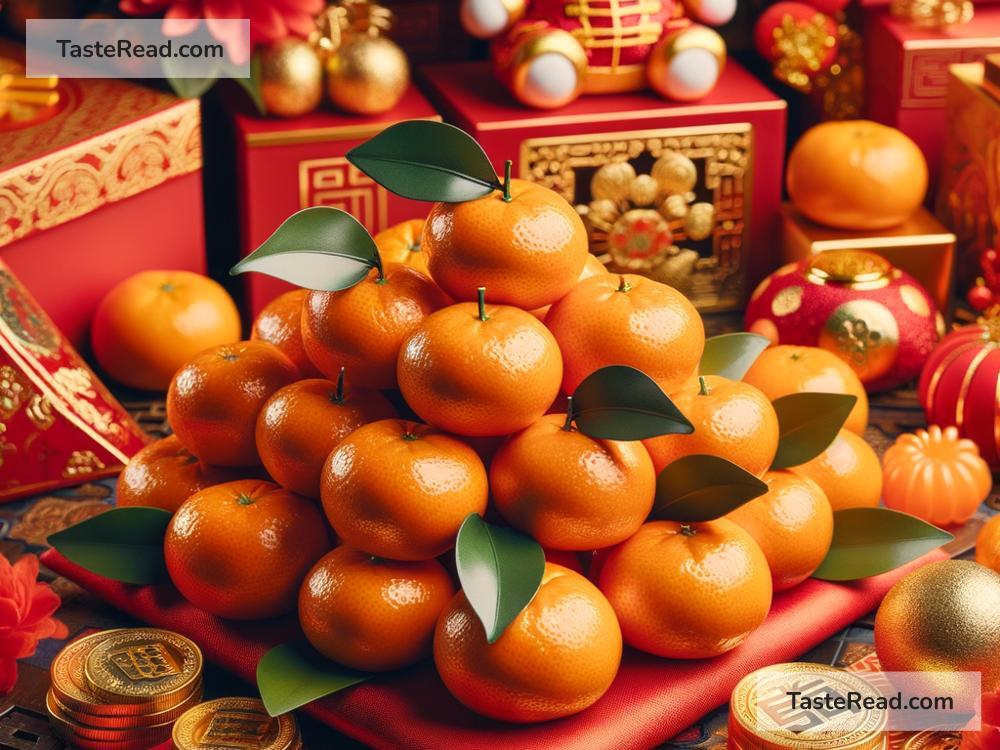The Fascinating History of Tangerines in Chinese New Year Traditions
Chinese New Year is one of the most important celebrations in Chinese culture. This holiday, also known as the Lunar New Year, is filled with colorful decorations, delicious foods, family gatherings, and meaningful customs. Among the many traditions, the simple tangerine holds a special place. While it may seem like an ordinary fruit, its connection to Chinese New Year goes back centuries and is full of meaning. Let’s explore the fascinating history and symbolism of tangerines in this beloved holiday.
A Fruit of Good Fortune
Tangerines have long been associated with good luck and prosperity in Chinese culture. One reason for this is the way they look. With their bright orange color, tangerines resemble gold. Gold, of course, represents wealth and success, which are hugely important wishes during Chinese New Year. People hope that the coming year will bring them financial stability, personal achievements, and happiness, and gifting or displaying tangerines is a way to express these wishes.
Another reason tangerines are linked to good fortune is their name in Chinese. In Mandarin, tangerines are called “júzi” (橘子), which sounds similar to the word “jí” (吉), meaning “luck” or “auspiciousness.” The similarity in sound makes tangerines a symbolic fruit for spreading positive energy and blessings during the Lunar New Year.
Giving and Receiving Tangerines
One of the most common ways tangerines are used during Chinese New Year is as gifts. When visiting family, friends, or business partners during the holiday, it is a tradition to bring tangerines as part of your gift. Typically, they are given in pairs, as even numbers are considered lucky in Chinese culture (while odd numbers may symbolize incompleteness or bad fortune). Offering tangerines is a way to wish happiness, health, and success to those you care about.
If you are visiting someone during Chinese New Year, you never go empty-handed—tangerines are a must! They are a thoughtful gift that represents your hope for their prosperity and good luck in the year ahead. Similarly, when you receive tangerines from hosts or guests, it is polite to accept them with both hands, showing respect and gratitude for their blessings.
Tangerines in Home Decorations
Tangerines are not only gifted, but they also play an important role in decorating homes during the Chinese New Year season. People often place bowls of tangerines on tables or arrange them as part of festive displays. They pair beautifully with other decorations, such as red envelopes, gold ingots, and flowers.
The fruit becomes a visual reminder of wealth, abundance, and happy wishes. Some families also add tangerine branches with green leaves, symbolizing vitality and growth. Together, the orange fruit and green leaves create a perfect harmony of prosperity and renewal.
The Role of Tangerines in Tradition
The tradition of using tangerines during Chinese New Year is believed to have started in southern China, where the fruit is commonly grown. Over time, the habit spread across other parts of the country and the world, becoming an essential part of the festivities.
Interestingly, tangerines are often paired with another fruit during these celebrations—oranges. Like tangerines, oranges also symbolize wealth and positivity. Together, they create an even stronger representation of good fortune. This pairing is widely used in rituals, such as offerings to ancestors or deities, bringing blessings for the upcoming year.
Tangerines in Modern Celebrations
Even in today’s modern world, where life moves quickly and traditions evolve, the humble tangerine remains an important symbol in Chinese New Year celebrations. Whether you are in a small village in China or a bustling city like New York, Singapore, or Sydney, you’ll see tangerines everywhere during the holiday season.
For people living outside of China, giving and displaying tangerines has become an easy way to honor tradition and stay connected to their cultural roots. Markets sell piles of fresh tangerines, often beautifully wrapped or packed in red and gold boxes, creating a festive atmosphere wherever you go. Nowadays, not only families but also businesses incorporate tangerines into their New Year decor to attract luck and prosperity in the coming year.
A Symbol of Hope for the Future
The beauty of Chinese New Year lies in its focus on togetherness, hope, and blessings for the year ahead. Tangerines are a small but meaningful part of these values, reminding people to stay positive and wish well for others. Whether exchanged as gifts, used as decorations, or eaten as part of New Year’s feasts, tangerines carry the weight of centuries-old traditions.
As you enjoy the Lunar New Year, take a moment to appreciate this humble fruit and the joy it brings. Behind its simple appearance is a rich history, a world of symbolism, and a message of optimism for the future. It’s amazing how something as small as a tangerine can hold such a big meaning in Chinese New Year traditions. So, next time you bite into a juicy tangerine, let it remind you to welcome luck and happiness into your life!
Happy Chinese New Year, and may you embrace the year with newfound prosperity, health, and joy!


